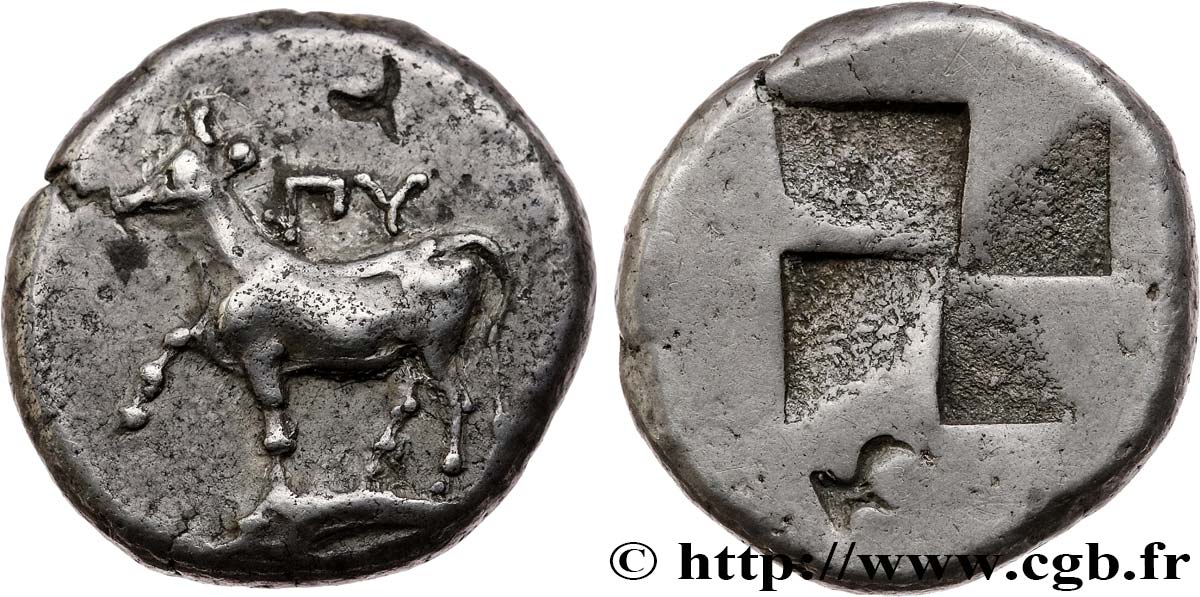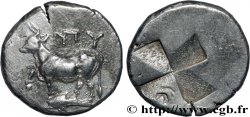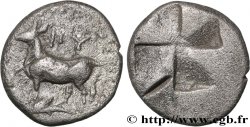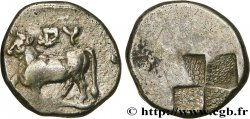Obverse
Obverse legend : (BY) ARCHAÏQUE.
Obverse description : Vache passant à gauche, placée sur un dauphin tourné à gauche.
Reverse
Reverse legend : ANÉPIGRAPHE.
Reverse description : Carré creux en ailes de moulin.
Commentary
Historical background
THRACE - BYZANTION
(5th - 4th century BC)
Byzantium, the future Constantinople and then Istanbul, was founded in 657 BC by Megarian settlers from central Greece. The city was besieged by Philip II of Macedonia in 340/339 BC and will be in the share of Lysimachus during the division of the Empire of Alexander. After Couroupédion, it regained its independence. Its location at the entrance to the Black Sea at the mouth of the Propontis as well as its rich fertile plains on the coast ensured great prosperity. The change of monetary standard in 357 BC seems to indicate a modification of the commercial circuits of the city which then turned more towards the Eastern Mediterranean and Rhodes than towards the Black Sea where the Persian standard was dominant. When the city obtained its autonomy at the beginning of the 3rd century, it resumed, according to the work of Henri Seyrig, the typology of the Lysimachus who would be minted in the city for more than 150 years (see lastly, MJ Price, Mithradates VI Eupator Dionysus and coinages of Black Sea, NC 1968, pp. 9-10 on late use of this type).










 Report a mistake
Report a mistake Print the page
Print the page Share my selection
Share my selection Ask a question
Ask a question Consign / sell
Consign / sell
 Full data
Full data










